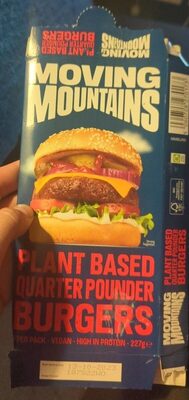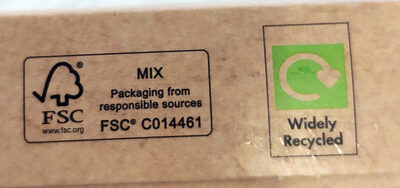Plant Based Quarter Pounder Burgers - Moving Mountains - 227g
This product page is not complete. You can help to complete it by editing it and adding more data from the photos we have, or by taking more photos using the app for Android or iPhone/iPad. Thank you!
×
Barcode: 5060728270173 (EAN / EAN-13)
Common name: Frozen plant-based quarter pounders made from pea and soya protein
Quantity: 227g
Packaging: Container
Brands: Moving Mountains
Categories: Plant-based foods and beverages, Plant-based foods, Meat alternatives, Meat analogues, Vegetarian patties
Labels, certifications, awards:
Vegetarian, Source of proteins, Vegan, FSC, FSC Mix, High proteins, The Vegan Society

Manufacturing or processing places: Grande-Bretagne
Traceability code: FSC-C014461
Link to the product page on the official site of the producer: https://movingmountainsfoods.com/product...
Countries where sold: Switzerland, United Kingdom
Matching with your preferences
Report a problem
Data sources
Product added on by openfoodfacts-contributors
Last edit of product page on by itsjustruby.
Product page also edited by alia, kiliweb, okwithmydecay, packbot, roboto-app, yuka.Fq9lIt6yQNAdLN_A74ZkxTXjGcS_U8J-MkwBog, yuka.sY2b0xO6T85zoF3NwEKvlmpYA4fQjCjBZi3gmEa61-qNFbHPMdtv77bbCKs.













